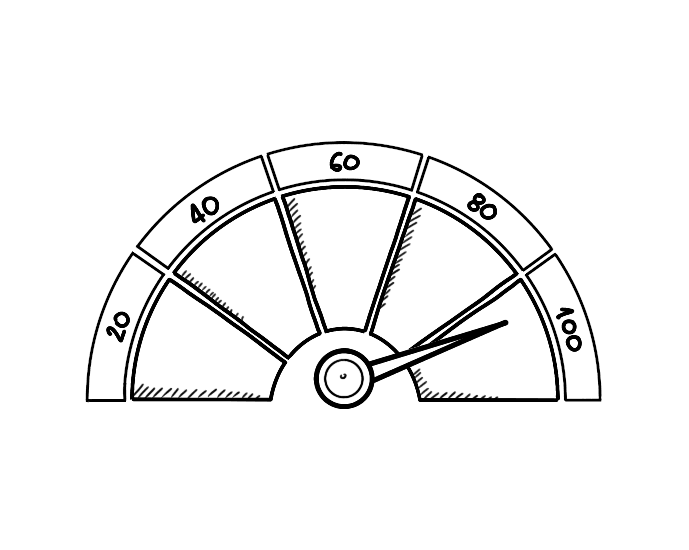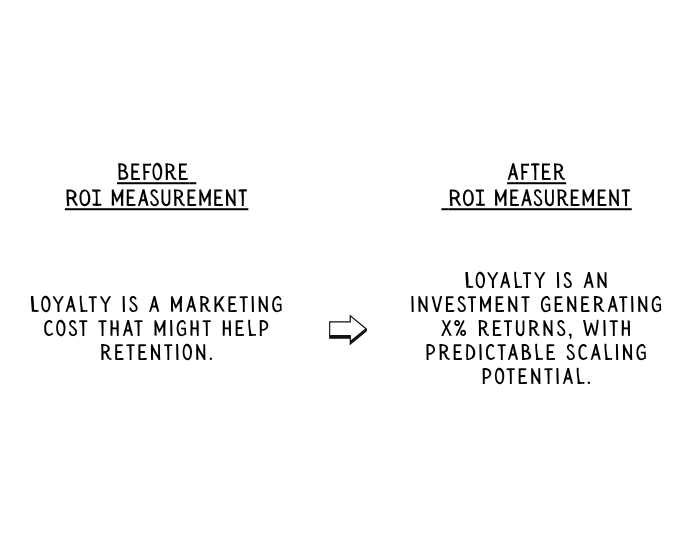Loyalty Blueprint Step 5. Track the performance
AN

Here's an uncomfortable truth about loyalty programs: while the costs appear clearly in your P&L, the benefits often remain invisible to leadership.
Marketing sees engagement rates. Finance sees program expenses. Operations sees complexity. But few organizations see the complete picture of how loyalty initiatives actually drive business growth.
This disconnect isn't just a reporting problem. It's a strategic disadvantage that keeps loyalty programs stuck in the "nice to have" category, rather than the "essential for growth" conversation.
The Digital Transformation Dilemma
For established companies navigating digital transformation, measuring the impact of loyalty presents a unique challenge. You're asking leadership to shift investment from traditional models they know intimately to data-driven approaches that feel uncertain.
It's like asking someone to jump into a pool when they can't see how deep the water is. The old business model is working "well enough," while the new approach requires faith in data they don't yet trust.
Meanwhile, people connected to traditional methods (often the majority of your organization) naturally protect the status quo. They have established metrics, proven processes, and predictable outcomes.
Your job isn't just to prove loyalty works. It's to prove it works better than what your company is currently doing.
The Measurement Advantage
Here's the secret weapon that changes everything: almost everything in loyalty is measurable with precision that traditional marketing can only dream of.
While you can debate the effectiveness of a TV commercial or the true impact of a billboard campaign, loyalty program performance comes with built-in measurement capabilities:
- Direct attribution through member identification
- Control group testing for true incrementality measurement
- Real-time feedback from digital interactions
- Long-term tracking through customer lifetime value
- Behavioral insights that predict future performance
This measurement precision transforms your conversations from opinion-based to fact-based, making budget discussions dramatically easier to navigate.
The ROI Transformation
When you can demonstrate clear ROI with mathematical precision, something fundamental shifts in how your organization views loyalty initiatives.
Before ROI measurement: "Loyalty is a marketing cost that might help retention."
After ROI measurement: "Loyalty is an investment generating X% returns, with predictable scaling potential."

This reframing unlocks budget conversations, executive attention, and organizational support that simply wasn't available when loyalty was viewed as a cost center.
One consumer electronics brand used control groups to prove that their loyalty emails generated a 19% uplift in revenue compared to non-member baselines, unlocking a 2x budget increase within six months. The precision of their measurement transformed skeptical finance teams into loyalty advocates.
The real power comes from scaling. You can test hypotheses with small customer groups, prove concepts with minimal risk, then scale successful initiatives with confidence. This de-risks innovation while building organizational trust.
The Three Metrics That Matter
Once you've established ROI credibility, three loyalty-specific metrics become your strategic compass:
1. Share of Sales (Sales Concentration)
What it measures: The percentage of total revenue generated by identified, engaged customers you can communicate with directly.
Why it matters: This metric reveals the percentage of your business that comes from customers you actually know versus those with anonymous transactions. Higher concentration means better business predictability and reduced marketing waste.
Strategic impact: Companies with a sales concentration of 60% or more can reduce acquisition costs while increasing customer lifetime value through targeted engagement.
2. Incremental Sales
What it measures: Revenue that wouldn't have occurred without your loyalty initiatives, measured through control group testing.
Why it matters: This separates correlation from causation, proving which activities actually drive business growth versus those that simply reward existing behavior.
Strategic impact: Understanding true incrementality allows you to optimize program investments for maximum business impact rather than vanity metrics.
3. Customer Lifetime Value (CLV)
What it measures: Current and projected future value of your best customers, segmented by loyalty engagement levels.
Why it matters: CLV reveals which customer behaviors and program elements actually drive long-term value, not just short-term transactions.
Strategic impact: CLV insights guide everything from product development to service investment to marketing budget allocation.
Turning Metrics into Strategy
These metrics don't just prove loyalty works, but they guide how your entire organization should think about customer relationships:
- Marketing Investment: Instead of broad-reach, spray-and-pray campaigns, focus the budget on high-CLV segments and proven incremental activities.
- Product Development: Use member feedback and behavior data to guide R&D priorities based on what your most valuable customers actually want.
- Service Operations: Prioritize service improvements that matter most to high-value, loyal customers who drive disproportionate business impact.
- Pricing Strategy: Understand price sensitivity across loyalty segments to optimize revenue without damaging key relationships.
The Credibility Compound Effect
Here's what happens when you consistently deliver fact-based loyalty insights:
- Month 1-3: You prove specific program elements work, gaining tactical credibility.
- Month 4-6: Leadership starts asking for your insights on broader marketing decisions.
- Month 7-12: Your customer data becomes central to strategic planning discussions.
- Year 2+: Loyalty becomes the growth engine that fuels data-driven decision making across the organization.
This progression transforms your role from program manager to customer intelligence leader, one of the most strategically valuable positions in modern business.
Building Your Measurement Framework
- Start with Business Basics:
- Establish clear control groups for all major initiatives
- Track customer behavior before, during, and after program engagement
- Calculate true incremental impact, not just correlation
- Layer in Loyalty Specifics:
- Measure engagement depth, not just participation
- Track progression through program tiers or lifecycle stages
- Monitor cross-channel behavior integration
- Connect to Business Outcomes:
- Link loyalty metrics directly to revenue and profit
- Show impact on customer acquisition costs
- Demonstrate effect on customer service efficiency
- Scale Your Insights:
- Test small, prove concepts, then scale
- Use member insights to improve non-member experiences
- Apply loyalty learnings to broader customer strategy
The Strategic Transformation
When loyalty measurement is done right, something remarkable happens: your program stops being about points and rewards and becomes about business intelligence and customer relationships.
Finance sees reduced acquisition costs and increased customer lifetime value. Marketing sees improved targeting efficiency and message effectiveness. Operations sees better resource allocation and service prioritization. Leadership sees data-driven growth opportunities.
Your loyalty program becomes the lens through which the entire organization better understands and serves customers.
From Defense to Offense
Most loyalty programs play defense, trying to prevent churn and retain existing customers. But when you have precise measurement and a clear ROI demonstration, you can play offense:
- Proactive growth strategies based on customer behavior predictions
- Innovation investments guided by member feedback and testing
- Market expansion using proven loyalty models and customer insights
- Competitive differentiation through superior customer relationship management
The Competitive Moat
Organizations that master loyalty measurement create a sustainable competitive advantage. They make faster, smarter decisions based on customer reality rather than market assumptions.
While competitors guess about customer needs, you have data. While they broadcast generic messages, you deliver personalized value. While they react to market changes, you predict and adapt.
This isn't just better marketing. It's better business.
Remember: Your loyalty program isn't just about retaining customers. It's generating the customer intelligence that can drive your entire business forward. The companies that master this measurement become the ones that win in the customer-centric economy.
Ready to transform your loyalty program from cost center to growth engine? Let's build a measurement framework that proves ROI and unlocks strategic investment in customer relationships.